Prododo
Your Personalized Productivity Game
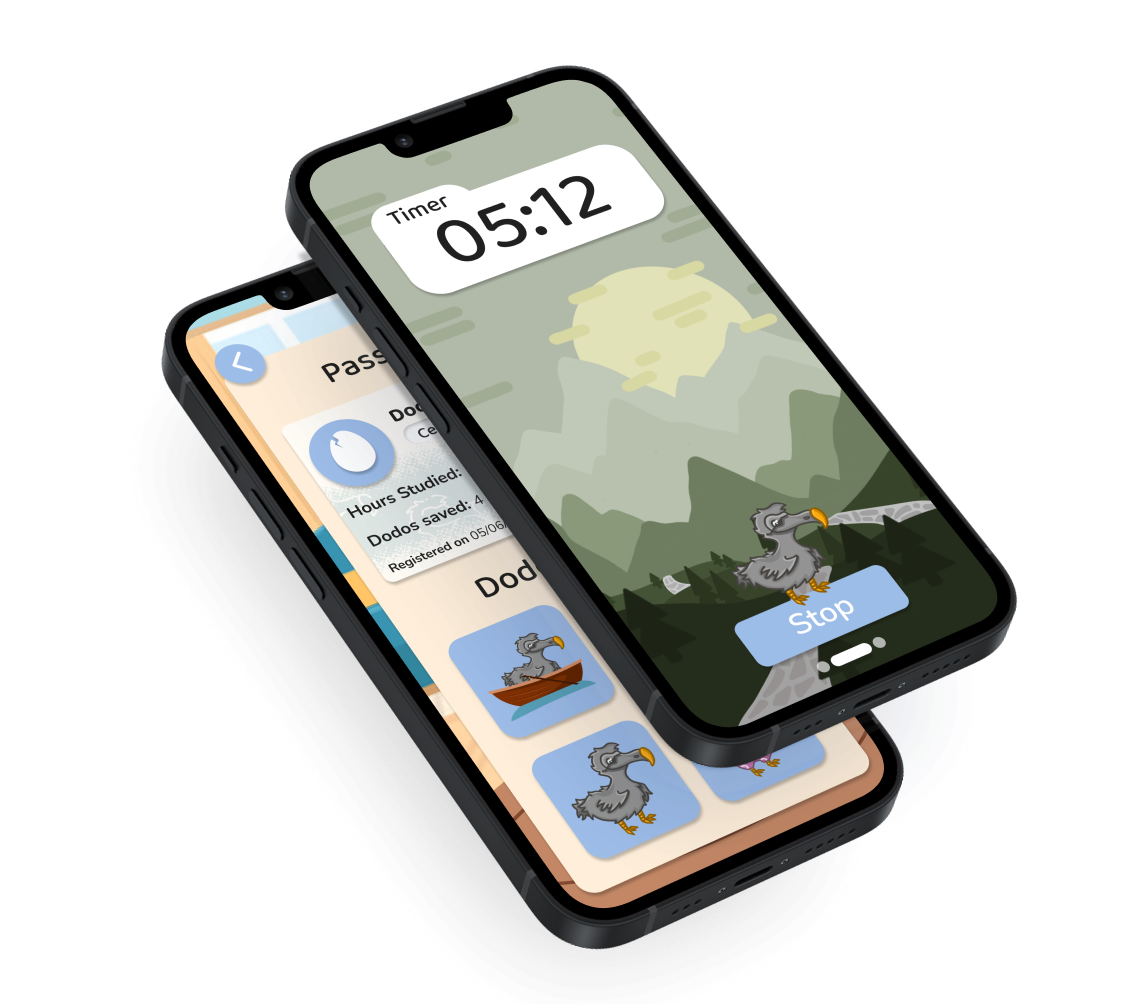
Role
Product Design Lead
UX Design
Research
Timeline
Dec 2022 – May 2023 (5 months)
Team
Keiver Bencomo, Adam Bi, Justin Sukomol, Jessica Kuo
Tools
Figma
Figjam
Illustrator
Problem
How might we design a productivity app that leverages the brain's dopamine reward cycle to enable personalized habit formation and enhanced workflow control?
Most productivity apps fail to sustain engagement because they don't align with natural habit formation. As a college student, I've struggled to find systems that keep me accountable without feeling rigid or uninspiring. My peers also report difficulties managing time and staying focused, often burning out from inefficient methods.
The good news? Psychological principles show us how to create stronger habits. Based on this, I wanted to explore leveraging the brain's dopamine reward cycle to help users manage productivity better.
Solution
A gamified experience that incorporates personalization and gamification to increase a user’s motivation for productivity and promote user retention.
Home Screen & Progress System
- Clear, game-inspired interface for engaging productivity
- Dodo's backpack stores passport and Dododex for tracking study progress
- Unlockable Dodo characters earned through successfully completed study sessions
Study Map & Session Setup
- Level-based study sessions
- Multiple time-tracking options including Pomodoro timer, regular timer, or stopwatch
- Flexible structure adapts to individual productivity styles
In-Session Interface
- Three swipeable screens: music control, calming break view, and task management
- Seamless task viewing, adding, and completion without disrupting a user’s focus
- Peaceful Dodo walking animation during breaks
- Sessions continue when temporarily leaving the app (at 0.25x speed), so there are no penalization for real-life interruptions like important messages
Research
Productivity is a personal experience: a user’s experience must be supported rather than shaped.
After performing literature review and researching the Candy Crush Effect (how games use ludic loops to reinforce positive behaviors through dopamine stimulation) I conducted a 12-question survey distributed through University of Washington Slack, Discord, LinkedIn, and Instagram. The survey collected quantitative and qualitative data on students’ productivity habits, struggles, and their experience (or lack thereof) with productivity apps. The key findings included:
- Existing solutions were unappealing or ineffective (63.2% had never used a productivity app before)
- There is a strong demand for solutions that enhance efficiency (57.9% of users)
- Users prioritize flexibility & prefer an app that adapts to their workflow rather than penalizing them
- “Forest” was the most used productivity app due to its gamification element, reinforcing that users find engagement strategies valuable
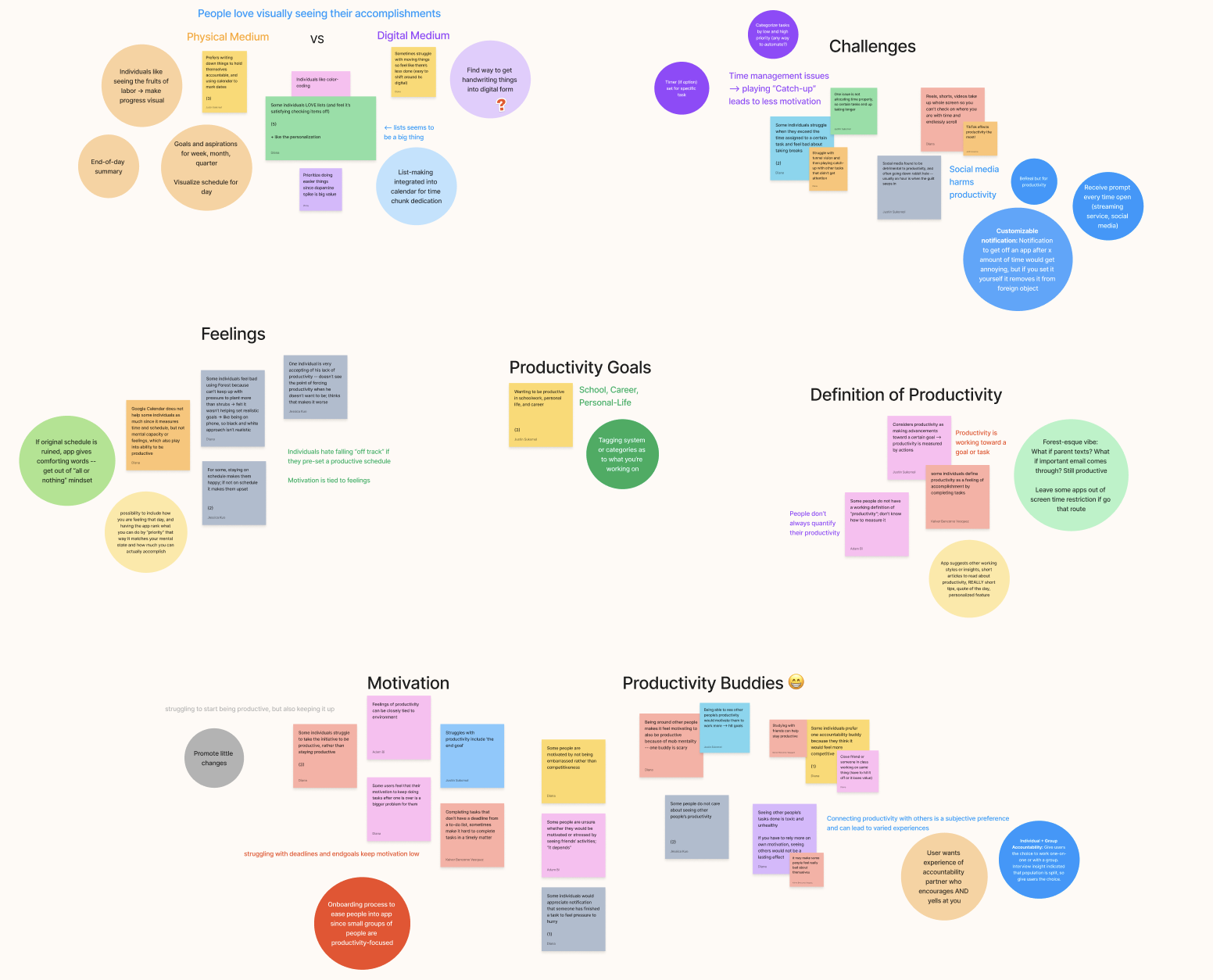
I conducted 13 interviews, focusing on understanding what motivates users to be productive, their pain points with current methods, and how they define success with productivity. Through affinity mapping, I synthesized responses into three major themes:
1
Productivity is personal
- People have different methods of staying productive (handwritten to-do lists, apps, mental tracking)
- Productivity is heavily influenced by environmental factors: some prefer silence, others noise
- Task-tracking preferences vary, Some find Pomodoro timers helpful, while others timers or stopwatches
2
Motivation is driven by emotion, not just logic
- Visualizing accomplishments increases motivation. Users felt encouraged when they could see their progress in an engaging way
- A lack of accountability leads to procrastination. Many expressed that they struggled to take the first step in getting started
3
Gamification needs to feel meaningful, not forced
- Users liked the idea of rewards, but only if they felt connected to their progress
- People were not motivated by badges or points, but by interactive and story-driven games
- Social accountability was polarizing - some found it helpful, while others felt it added pressure
Ideation
Balancing research-driven decisions while creating engaging gamification.
To address users' need for personalization, I worked on creating a system that adapts to different work styles rather than enforcing rigid structure. I focused on individual achievement-based gamification instead of competitive elements, allowing users to engage naturally with productivity.

Inspired by Candy Crush's ludic system, I introduced a traveling Dodo character that provides visual progress tracking, responding to users' emotion-driven motivation and the effectiveness of seeing accomplishments.
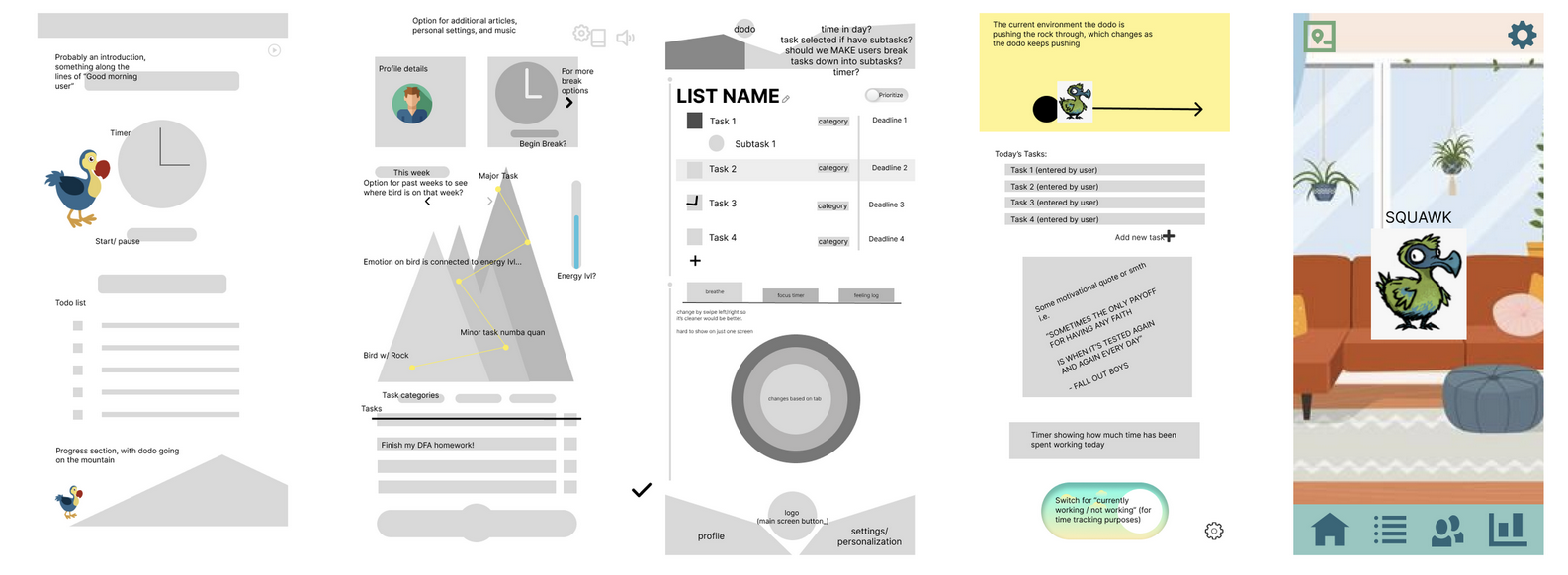
To make gamification feel meaningful rather than forced, users collect Dodo companions through consistent study sessions, creating long-term engagement instead of relying on arbitrary points or badges. A/B testing helped refine these ideas. Deciding to remove a traditional navigation bar for example helped improved focus and usability, making the app feel more intuitive.

Style Guide
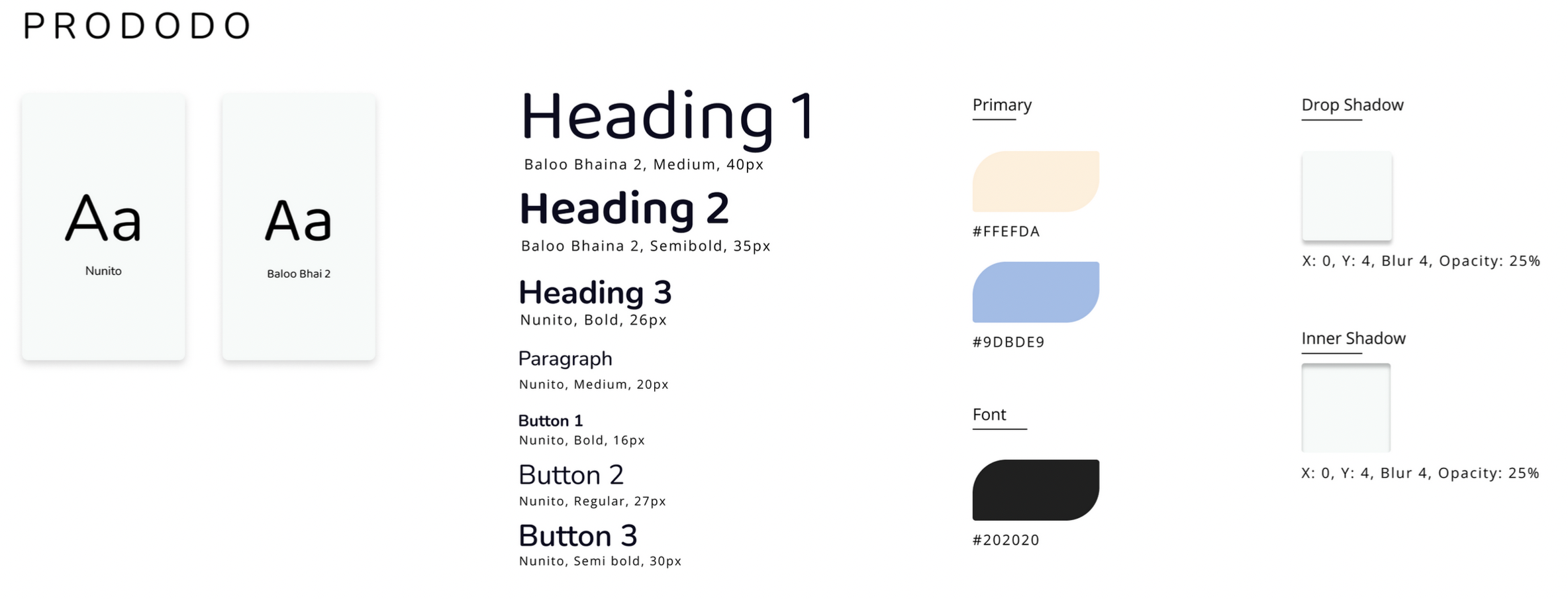
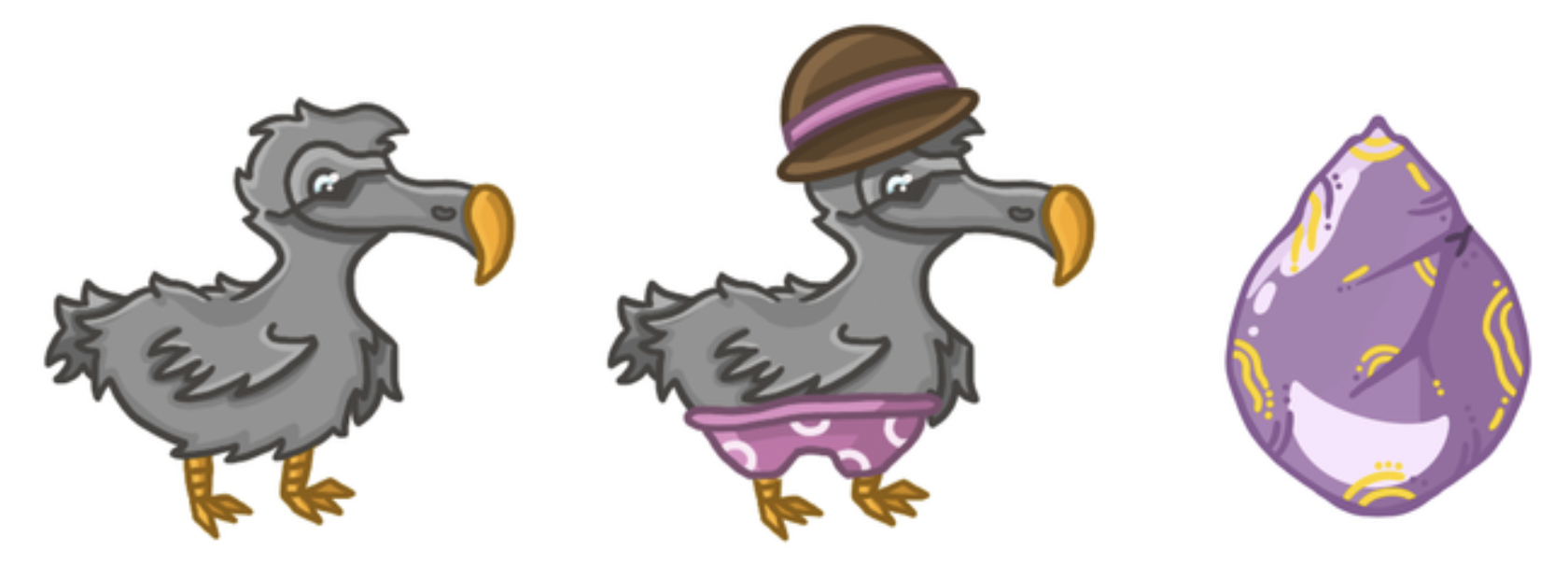
Reflection
Looking at leadership, collaboration, and the design process.
The opportunity to pitch an idea to Design for America, get approval, and build my own design team was a dream come true. Initially, having all eyes on me for answers was intimidating, but I’m proud of how I quickly adapted to my role and responsibilities.
As someone with a research background, I was thrilled to insist on a data-driven approach as it’s something I’ve seen overlooked in other projects. Tying our design choices to psychological principles ensured we met user needs while maintaining an engaging experience.
Collaborating with a team of designers with different experience levels taught me how to align perspectives, facilitate discussions, and balance structure with creativity. Since all team members were students at the University of Washington, scheduling and differing work paces also required active coordination. One of my biggest takeaways was learning the importance of design system consistency, as early component creation would have saved time and ensured cohesion.
What I Would Do Differently:
The stats, calendar, and tasks sections were a bit overlooked and ended up lacking the same polish as the rest of the app. Even though they weren’t as exciting to design, they were critical for usability and should have been prioritized earlier.
- Aligning team members on a clearer roadmap earlier in the process would have helped prevent last-minute adjustments.
- Time constraints limited our ability to conduct thorough usability testing. Testing with more users at different stages would have refined features and interactions earlier.
- Refine and test gamification mechanics to optimize engagement over time
- Enhance personalization features, allowing users to tailor their productivity methods more deeply
- Expand accessibility and platform support, ensuring usability across different devices and needs
- Analyze long-term retention data to understand user engagement beyond initial adoption
Despite the challenges, seeing Prododo come to life through collaboration, research, and iteration was incredibly rewarding. This project reinforced my passion for bridging psychology and design and I look forward to applying these lessons in future work!
Prododo
Your Personalized Productivity Game

Role
Product Design Lead
UX Design
Research
Timeline
Dec 2022 – May 2023
(5 months)
Team
Keiver Bencomo,
Adam Bi, Jessica Kuo, Justin Sukomol
Tools
Figma
Figjam
Illustrator
Problem
How might we design a productivity app that leverages the brain's dopamine reward cycle to enable personalized habit formation and enhanced workflow control?
Most productivity apps fail to sustain engagement because they don't align with natural habit formation. As a college student, I've struggled to find systems that keep me accountable without feeling rigid or uninspiring. My peers also report difficulties managing time and staying focused, often burning out from inefficient methods.
The good news? Psychological principles show us how to create stronger habits. Based on this, I wanted to explore leveraging the brain's dopamine reward cycle to help users manage productivity better.
Solution
A gamified experience that incorporates personalization and gamification to increase a user’s motivation for productivity and promote user retention.
Home Screen & Progress System
- Clear, game-inspired interface for engaging productivity
- Dodo's backpack stores passport and Dododex for tracking study progress
- Unlockable Dodo characters earned through successfully completed study sessions
Study Map & Session Setup
- Level-based study sessions
- Multiple time-tracking options including Pomodoro timer, regular timer, or stopwatch
- Flexible structure adapts to individual productivity styles
In-Session Interface
- Three swipeable screens: music control, calming break view, and task management
- Seamless task viewing, adding, and completion without disrupting a user’s focus
- Peaceful Dodo walking animation during breaks
- Sessions continue when temporarily leaving the app (at 0.25x speed), so there are no penalization for real-life interruptions like important messages
Research
Productivity is a personal experience: a user’s experience must be supported rather than shaped.
After performing literature review and researching the Candy Crush Effect (how games use ludic loops to reinforce positive behaviors through dopamine stimulation) I conducted a 12-question survey distributed through University of Washington Slack, Discord, LinkedIn, and Instagram. The survey collected quantitative and qualitative data on students’ productivity habits, struggles, and their experience (or lack thereof) with productivity apps. The key findings included:
- Existing solutions were unappealing or ineffective (63.2% had never used a productivity app before)
- There is a strong demand for solutions that enhance efficiency (57.9% of users)
- Users prioritize flexibility & prefer an app that adapts to their workflow rather than penalizing them
- “Forest” was the most used productivity app due to its gamification element, reinforcing that users find engagement strategies valuable

I conducted 13 interviews, focusing on understanding what motivates users to be productive, their pain points with current methods, and how they define success with productivity. Through affinity mapping, I synthesized responses into three major themes:
1
Productivity is personal
- People have different methods of staying productive (handwritten to-do lists, apps, mental tracking)
- Productivity is heavily influenced by environmental factors: some prefer silence, others noise
- Task-tracking preferences vary, Some find Pomodoro timers helpful, while others timers or stopwatches
2
Motivation is driven by emotion, not just logic
- Visualizing accomplishments increases motivation. Users felt encouraged when they could see their progress in an engaging way
- A lack of accountability leads to procrastination. Many expressed that they struggled to take the first step in getting started
3
Gamification needs to feel meaningful, not forced
- Users liked the idea of rewards, but only if they felt connected to their progress
- People were not motivated by badges or points, but by interactive and story-driven games
- Social accountability was polarizing - some found it helpful, while others felt it added pressure
Ideation
Balancing research-driven decisions while creating engaging gamification.
To address users' need for personalization, I worked on creating a system that adapts to different work styles rather than enforcing rigid structure. I focused on individual achievement-based gamification instead of competitive elements, allowing users to engage naturally with productivity.

Inspired by Candy Crush's ludic system, I introduced a traveling Dodo character that provides visual progress tracking, responding to users' emotion-driven motivation and the effectiveness of seeing accomplishments.

To make gamification feel meaningful rather than forced, users collect Dodo companions through consistent study sessions, creating long-term engagement instead of relying on arbitrary points or badges. A/B testing helped refine these ideas. Deciding to remove a traditional navigation bar for example helped improved focus and usability, making the app feel more intuitive.

Style Guide


Reflection
Looking at leadership, collaboration, and the design process.
The opportunity to pitch an idea to Design for America, get approval, and build my own design team was a dream come true. Initially, having all eyes on me for answers was intimidating, but I’m proud of how I quickly adapted to my role and responsibilities.
As someone with a research background, I was thrilled to insist on a data-driven approach as it’s something I’ve seen overlooked in other projects. Tying our design choices to psychological principles ensured we met user needs while maintaining an engaging experience.
Collaborating with a team of designers with different experience levels taught me how to align perspectives, facilitate discussions, and balance structure with creativity. Since all team members were students at the University of Washington, scheduling and differing work paces also required active coordination. One of my biggest takeaways was learning the importance of design system consistency, as early component creation would have saved time and ensured cohesion.
What I Would Do Differently:
The stats, calendar, and tasks sections were a bit overlooked and ended up lacking the same polish as the rest of the app. Even though they weren’t as exciting to design, they were critical for usability and should have been prioritized earlier.
- Aligning team members on a clearer roadmap earlier in the process would have helped prevent last-minute adjustments.
- Time constraints limited our ability to conduct thorough usability testing. Testing with more users at different stages would have refined features and interactions earlier.
- Refine and test gamification mechanics to optimize engagement over time
- Enhance personalization features, allowing users to tailor their productivity methods more deeply
- Expand accessibility and platform support, ensuring usability across different devices and needs
- Analyze long-term retention data to understand user engagement beyond initial adoption
Despite the challenges, seeing Prododo come to life through collaboration, research, and iteration was incredibly rewarding. This project reinforced my passion for bridging psychology and design and I look forward to applying these lessons in future work!
Prododo
Your Personalized Productivity Game

Role
Product Design Lead
UX Design
Research
Timeline
Dec 2022 – May 2023
(5 months)
Team
Keiver Bencomo,
Adam Bi, Jessica Kuo, Justin Sukomol
Tools
Figma
Figjam
Illustrator
Problem
How might we design a productivity app that leverages the brain's dopamine reward cycle to enable personalized habit formation and enhanced workflow control?
Most productivity apps fail to sustain engagement because they don't align with natural habit formation. As a college student, I've struggled to find systems that keep me accountable without feeling rigid or uninspiring. My peers also report difficulties managing time and staying focused, often burning out from inefficient methods.
The good news? Psychological principles show us how to create stronger habits. Based on this, I wanted to explore leveraging the brain's dopamine reward cycle to help users manage productivity better.
Solution
A gamified experience that incorporates personalization and gamification to increase a user’s motivation for productivity and promote user retention.
Home Screen & Progress System
- Clear, game-inspired interface for engaging productivity
- Dodo's backpack stores passport and Dododex for tracking study progress
- Unlockable Dodo characters earned through successfully completed study sessions
Study Map & Session Setup
- Level-based study sessions
- Multiple time-tracking options including Pomodoro timer, regular timer, or stopwatch
- Flexible structure adapts to individual productivity styles
In-Session Interface
- Three swipeable screens: music control, calming break view, and task management
- Seamless task viewing, adding, and completion without disrupting a user’s focus
- Peaceful Dodo walking animation during breaks
- Sessions continue when temporarily leaving the app (at 0.25x speed), so there are no penalization for real-life interruptions like important messages
Research
Productivity is a personal experience: a user’s experience must be supported rather than shaped.
After performing literature review and researching the Candy Crush Effect (how games use ludic loops to reinforce positive behaviors through dopamine stimulation) I conducted a 12-question survey distributed through University of Washington Slack, Discord, LinkedIn, and Instagram. The survey collected quantitative and qualitative data on students’ productivity habits, struggles, and their experience (or lack thereof) with productivity apps. The key findings included:
- Existing solutions were unappealing or ineffective (63.2% had never used a productivity app before)
- There is a strong demand for solutions that enhance efficiency (57.9% of users)
- Users prioritize flexibility & prefer an app that adapts to their workflow rather than penalizing them
- “Forest” was the most used productivity app due to its gamification element, reinforcing that users find engagement strategies valuable

I conducted 13 interviews, focusing on understanding what motivates users to be productive, their pain points with current methods, and how they define success with productivity. Through affinity mapping, I synthesized responses into three major themes:
1
Productivity is personal
- People have different methods of staying productive (handwritten to-do lists, apps, mental tracking)
- Productivity is heavily influenced by environmental factors: some prefer silence, others noise
- Task-tracking preferences vary, Some find Pomodoro timers helpful, while others timers or stopwatches
2
Motivation is driven by emotion, not just logic
- Visualizing accomplishments increases motivation. Users felt encouraged when they could see their progress in an engaging way
- A lack of accountability leads to procrastination. Many expressed that they struggled to take the first step in getting started
3
Gamification needs to feel meaningful, not forced
- Users liked the idea of rewards, but only if they felt connected to their progress
- People were not motivated by badges or points, but by interactive and story-driven games
- Social accountability was polarizing - some found it helpful, while others felt it added pressure
Ideation
Balancing research-driven decisions while creating engaging gamification.

To address users' need for personalization, I worked on creating a system that adapts to different work styles rather than enforcing rigid structure. I focused on individual achievement-based gamification instead of competitive elements, allowing users to engage naturally with productivity.
Inspired by Candy Crush's ludic system, I introduced a traveling Dodo character that provides visual progress tracking, responding to users' emotion-driven motivation and the effectiveness of seeing accomplishments.


To make gamification feel meaningful rather than forced, users collect Dodo companions through consistent study sessions, creating long-term engagement instead of relying on arbitrary points or badges. A/B testing helped refine these ideas. Deciding to remove a traditional navigation bar for example helped improved focus and usability, making the app feel more intuitive.
Style Guide


Reflection
Looking at leadership, collaboration, and the design process.
The opportunity to pitch an idea to Design for America, get approval, and build my own design team was a dream come true. Initially, having all eyes on me for answers was intimidating, but I’m proud of how I quickly adapted to my role and responsibilities.
As someone with a research background, I was thrilled to insist on a data-driven approach as it’s something I’ve seen overlooked in other projects. Tying our design choices to psychological principles ensured we met user needs while maintaining an engaging experience.
Collaborating with a team of designers with different experience levels taught me how to align perspectives, facilitate discussions, and balance structure with creativity. Since all team members were students at the University of Washington, scheduling and differing work paces also required active coordination. One of my biggest takeaways was learning the importance of design system consistency, as early component creation would have saved time and ensured cohesion.
What I Would Do Differently:
The stats, calendar, and tasks sections were a bit overlooked and ended up lacking the same polish as the rest of the app. Even though they weren’t as exciting to design, they were critical for usability and should have been prioritized earlier.
- Aligning team members on a clearer roadmap earlier in the process would have helped prevent last-minute adjustments.
- Time constraints limited our ability to conduct thorough usability testing. Testing with more users at different stages would have refined features and interactions earlier.
- Refine and test gamification mechanics to optimize engagement over time
- Enhance personalization features, allowing users to tailor their productivity methods more deeply
- Expand accessibility and platform support, ensuring usability across different devices and needs
- Analyze long-term retention data to understand user engagement beyond initial adoption
Despite the challenges, seeing Prododo come to life through collaboration, research, and iteration was incredibly rewarding. This project reinforced my passion for bridging psychology and design and I look forward to applying these lessons in future work!